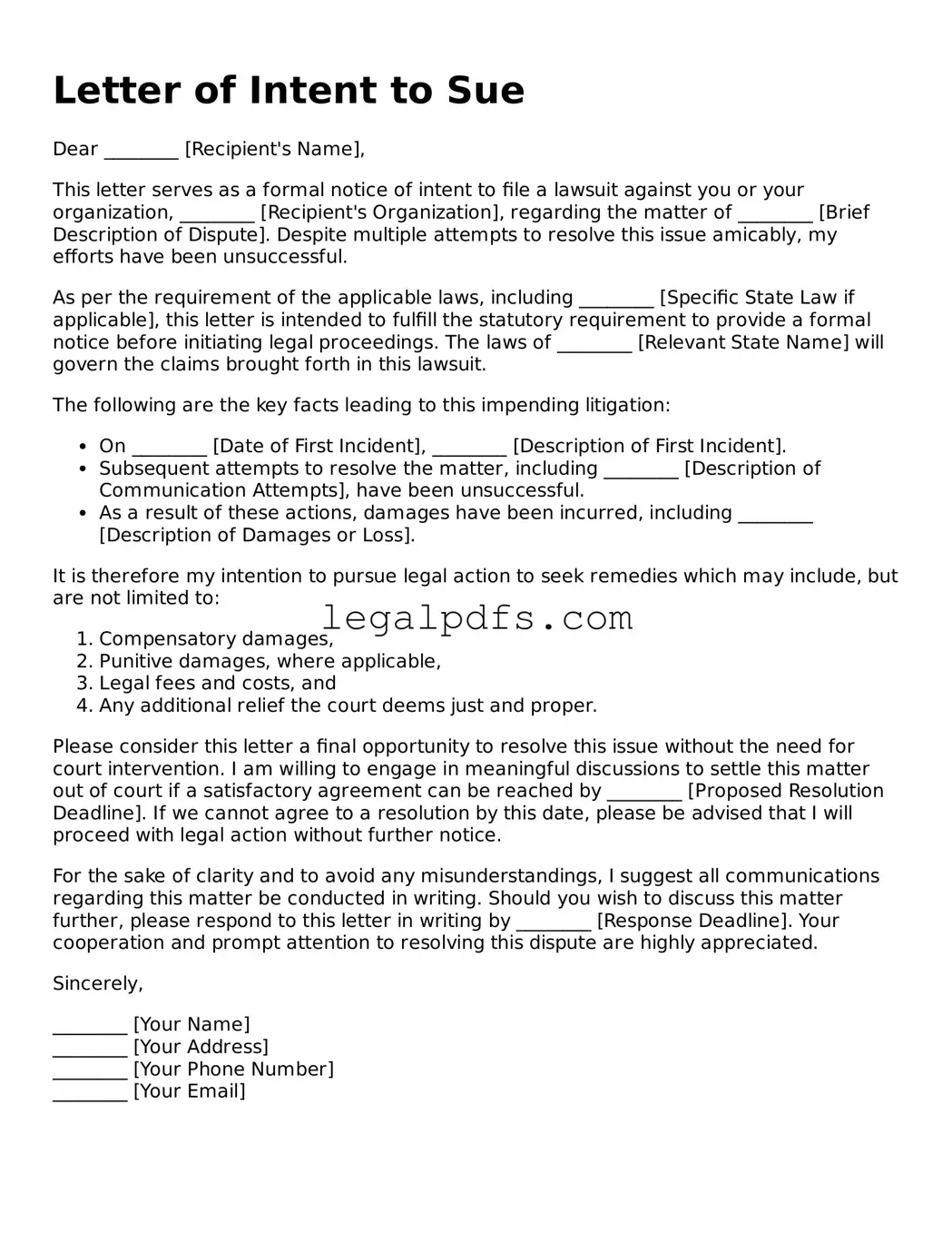Letter of Intent to Sue
Dear ________ [Recipient's Name],
This letter serves as a formal notice of intent to file a lawsuit against you or your organization, ________ [Recipient's Organization], regarding the matter of ________ [Brief Description of Dispute]. Despite multiple attempts to resolve this issue amicably, my efforts have been unsuccessful.
As per the requirement of the applicable laws, including ________ [Specific State Law if applicable], this letter is intended to fulfill the statutory requirement to provide a formal notice before initiating legal proceedings. The laws of ________ [Relevant State Name] will govern the claims brought forth in this lawsuit.
The following are the key facts leading to this impending litigation:
- On ________ [Date of First Incident], ________ [Description of First Incident].
- Subsequent attempts to resolve the matter, including ________ [Description of Communication Attempts], have been unsuccessful.
- As a result of these actions, damages have been incurred, including ________ [Description of Damages or Loss].
It is therefore my intention to pursue legal action to seek remedies which may include, but are not limited to:
- Compensatory damages,
- Punitive damages, where applicable,
- Legal fees and costs, and
- Any additional relief the court deems just and proper.
Please consider this letter a final opportunity to resolve this issue without the need for court intervention. I am willing to engage in meaningful discussions to settle this matter out of court if a satisfactory agreement can be reached by ________ [Proposed Resolution Deadline]. If we cannot agree to a resolution by this date, please be advised that I will proceed with legal action without further notice.
For the sake of clarity and to avoid any misunderstandings, I suggest all communications regarding this matter be conducted in writing. Should you wish to discuss this matter further, please respond to this letter in writing by ________ [Response Deadline]. Your cooperation and prompt attention to resolving this dispute are highly appreciated.
Sincerely,
________ [Your Name]
________ [Your Address]
________ [Your Phone Number]
________ [Your Email]
